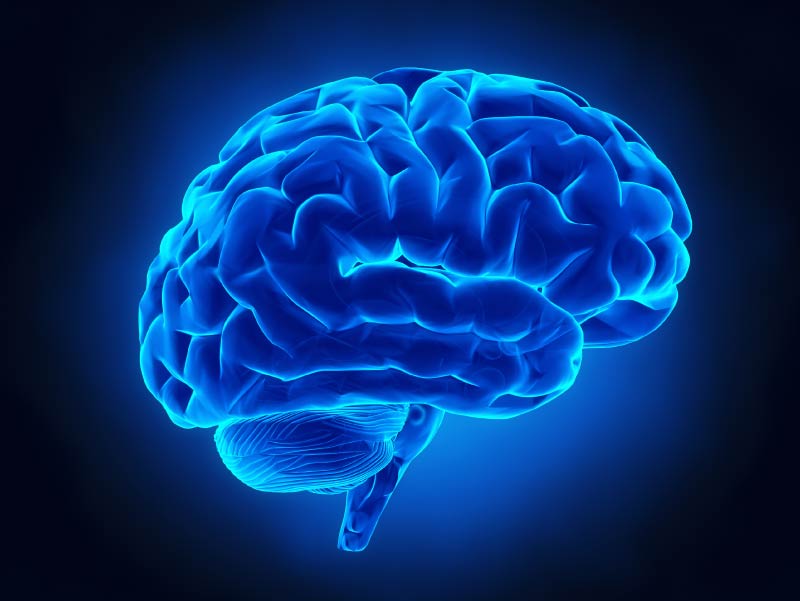Dr. Dre is recovering from a brain aneurysm. What is that?
By Jaime Aron, American Heart Association News

The news that rapper and record executive Dr. Dre is recovering from a brain aneurysm has many people wondering: What is a brain aneurysm? What can be done about it? And what are the warning signs?
The explanation begins with an important clarification: An aneurysm is like a bubble in the wall of an artery, and plenty of people have them in their brain. Most are harmless, said neurologist Dr. Mitchell Elkind, president of the American Heart Association. But when the bubble bursts, blood rushes into the brain, which can cause severe damage, even death. The bleeding is called a subarachnoid hemorrhage, and it's a type of stroke.
The analogy often used is of a water line that may be giving way with little evidence … until everyone knows it.
"It's kind of like the neurological equivalent of sudden cardiac death," said Elkind, a professor of neurology and epidemiology at Columbia University in New York City. "It can happen to young, perfectly healthy people. There is no reason to suspect anything and, boom, it comes out of nowhere."
At that point, as with the water pipe break analogy, there's going to be damage. The question is, how much.
A patient must get to the hospital as quickly as possible to limit the amount of brain damage. Doctors can then use imaging tests to determine where the problem is and how bad it is. There are two ways to try fixing it depending on how easy or difficult it is to reach, the patient's overall health and other factors.
Doctors can perform an operation to clip off the bubble so it can't rupture again; that requires cutting into the skull. Another option is snaking a catheter through a blood vessel in the groin, up the body and into the brain; the device is equipped with tools to fill the bubble with a metal coil or even a type of glue, also preventing it from breaking again. This is like the cardiac catheterization procedure used to insert a stent into a blockage in a heart artery.
"The thought is that when it's done surgically, it's more definitive because the surgeon can see where to put the clip and whether it's definitively (closed)," Elkind said. "When done vascularly, there's the concern whether it'll grow back again, but it's a less-invasive procedure."
Dre posted Tuesday on Instagram that he's "doing great and getting excellent care from my medical team" at a Los Angeles hospital. News outlets reported that the 55-year-old producer suffered a brain aneurysm Monday.
The most common warning sign of an aneurysm that may have already leaked is often described as the "worst headache of your life." While Elkind cautioned that such an extreme discomfort doesn't always mean a subarachnoid hemorrhage, it usually requires dialing 911.
"Any sudden, severe headache that's unlike any headache you've had before warrants investigation as quickly as possible," he said. "A bunch of bad things could come from it."
Todd Crawford certainly didn't know that when his wife, Lisa Colagrossi – a fit, healthy 49-year-old news reporter for the ABC affiliate in New York and mother of two boys – began complaining of strong headaches.
"She experienced that headache two or three times a week over about four weeks and we completely dismissed it," Crawford said. "Nobody out there had ever focused on communicating the top signs and symptoms of a brain aneurysm."
Crawford set out to fill that void soon after Colagrossi died in March 2015. He started the Lisa Foundation with the mission of "shedding light on brain aneurysms." The organization has primarily focused on explaining what they are, who is at risk and the top warning signs and symptoms.
The group has launched two public service announcements, the latest featuring Whoopi Goldberg, whose brother died from a brain aneurysm.
"We want people to get to the point where they don't dismiss a headache," Crawford said. "Heed the warning. Listen to your body and take action. This is a condition where every second literally matters. If you hesitate or put it off, you may not be around to see your family again."
Other warning signs of a ruptured brain aneurysm include all sorts of suddenly arising sensations: a loud, booming noise (like a gunshot) heard only by the patient; sensitivity to light; neck stiffness; pain around an eye; vision problems; numbness or tingling in the face; and more.
Risk factors for brain aneurysms include smoking, high blood pressure, connective tissue disorders and a family history, usually a parent or sibling. Women, people of color and those over 40 are at higher risk.
Research suggests up to 1 in 20 people in the United States will develop a brain aneurysm in their lifetime, according to the National Institute of Neurological Disorders and Stroke. However, Elkind emphasized the difference between having a brain aneurysm and having one rupture.
"Many people walk around with what we call asymptomatic – or unruptured – brain aneurysms," he said. "Most are small, and people live with them without any problem at all. We only worry about them when they get large enough to cause a problem."
If you have questions or comments about this story, please email [email protected].





